Archaeologists discovered caches of American Revolutionary War artefacts at Gloucester Point, Virginia, United States of America. Excavations were conducted prior to construction of a new Virginia Institute of Marine Science.

Archaeologist have been excavating the site for 10 months when the have uncovered a series of French infantry buttons and English and Spanish coins and artefacts linked to Royal Edinburgh Volunteers, who fortified, defended and ultimately surrendered Gloucester Point to American and French forces during the 1781 Siege of Yorktown. In the beginning of 17th century Gloucester Point became the site of a pioneering tobacco warehouse in 1633 and was fortified against Dutch raiders in the late 1600s. A century later it grown into one of Virginia’s most developed and affluent towns. During the American Revolution (1775–1783) and Civil War (1861-1865) it was fortified.
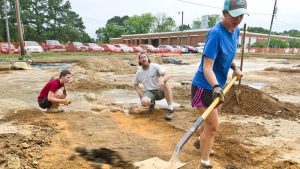
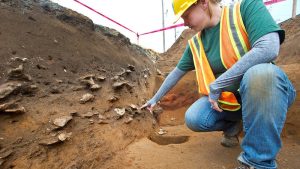
One of the finds points to a particular person, a young British officer. It is a brass plate covered with an engraving stating: “Lt. Dickson, 80th Regt. of Foot”. He was an officer of the Royal Edinburgh Volunteers. The regiment previously served in Gen. Lord Cornwallis’ summer campaign through the Southern colonies. In fact Dickson’s 80th Regiment of Foot was the first British unit to land at Gloucester Point when Cornwallis moved his army up the York River in late July 1781. One of the Regiment’s senior officers helped write the Articles of Capitulation when the British gave themselves up.
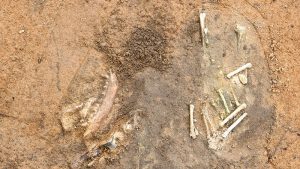
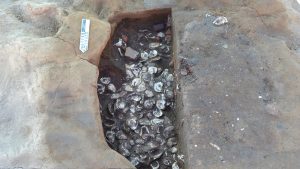
Researchers were also able to trace down the identity of “Lt. Dickson”, being James Dickson, a member of a prominent Edinburgh family who joined the Volunteers in 1778. He sailed to New York the following year and saw action with Cornwallis’ army in such clashes as the July 6, 1781, Battle of Green Spring near Williamsburg. He is said to have survived the siege and produced offspring, including a branch of the family that immigrated to Canada and now has members living in Greensboro.

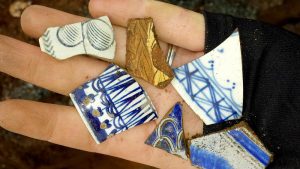
Researchers also uncovered evidence of two boundary ditches, three Civil War trash pits, artefact-filled cellars of post-in-ground structures, and a pair of 18th-century structures linked to the once-bustling colonial port known as Gloucester Town, adding up to more than 640 features found at the site. Among the other Revolutionary War-era items found in the 13-foot-long cellar are four French infantry buttons, an English half-penny dated 1773, a silver piece of eight, two matching shoe buckles and such pieces of brass hardware as a drawer pull and a lock plate. Researchers believe that the artefacts were deposited during some sort of post-Revolution clean-up of the area.

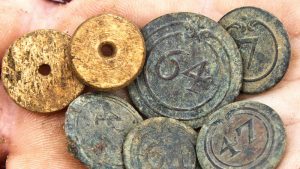

More pictures of finds and excavations available at this site:
http://www.dailypress.com/features/history/dp-gloucester-point-dig-20160603-photogallery.html
(after Daily Press, Joe Fudge & VIMS)